
Key Takeaways
- Diverse wildlife thrives around the world's lakes.
- Photographs can capture and reveal the essence of lake ecosystems.
- The imagery backs conservation and understanding of lake biomes.
Imagine capturing the essence of the world's most exotic lake wildlife in one photo album – now that would be a journey worth sharing!
From the playful antics of Galápagos sea lions to the serene grace of African herons, each snapshot offers a window into the diverse universe of lake inhabitants across all seven continents.
You're not just looking at images; you're peering into the lives of creatures that animate the waters of our planet – a true testament to nature's splendor.
Whether it be a flamboyance of flamingos against the Andean sunset or the silent hunt of a predatory bird, these photographs chronicle the fascinating behaviors and ecosystems that exist around lakes worldwide.
Your trust in this photographic odyssey is well placed as it's backed by thorough research and a genuine passion for the astounding biodiversity that lakes support.
Hippos in Lake Victoria, Africa

Have you ever pictured a gentle giant lounging in the shallows of an expansive lake?
Lake Victoria is just the place to spy on hippos in their natural habitat!
This iconic African lake serves as a picturesque backdrop for your hippo viewing adventure.
Did you know?
These hefty herbivores can chomp down on about 55 pounds of grass daily.
That's sure a lot of lawn mowing if you ask me!
Let's talk numbers, too.
When hippos decide it's time for a snack, they're not shy about where they leave their leftovers.
Nearly half of their, let's call it 'processed grass', finds its way into the waters of Lake Victoria.
This surprisingly contributes to the local ecosystem by providing silica – a nutrient much needed downstream!
Fun Facts About Hippos in Lake Victoria:
- Peak Grazing Time: You're most likely to see them snacking at dusk or dawn.
- Social Creatures: They often hang out in groups or 'schools'.
- Aquatic Powerhouses: Despite their size, hippos can hold their breath underwater for up to five minutes.
Remember, while they may look like the perfect candidates for a cuddly plush toy, these are wild animals.
Viewing from a safe distance is essential.
Enjoy the sight of these amazing creatures in their element and let them stir your wild curiosity about the natural world!
Galápagos Sea Lions in South America
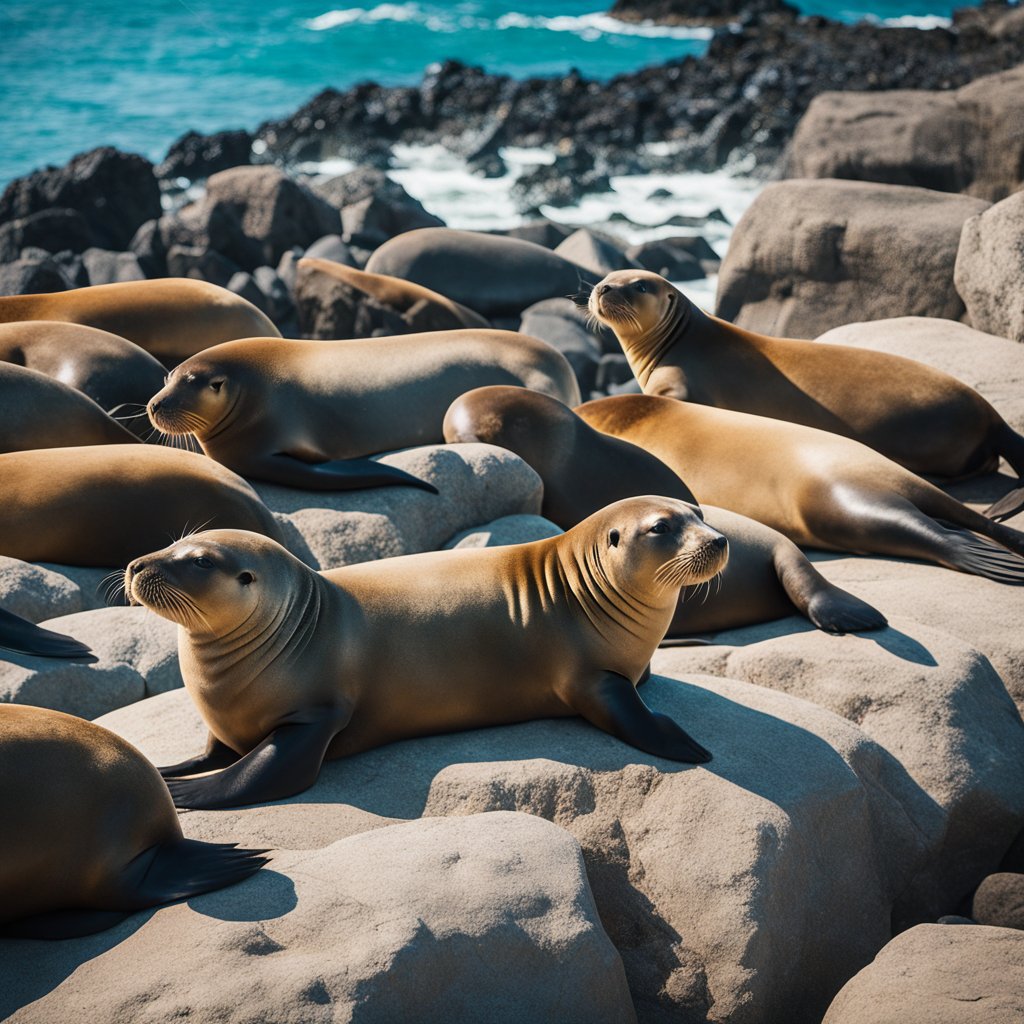
Have you ever dreamt of capturing the perfect shot of an exotic creature in its natural habitat?
Picture this: you're strolling along the sun-kissed beaches of the Galápagos Islands, camera in hand, and there they are!
Galápagos sea lions basking in the sun or frolicking in the surf.
These sea lions aren't just any marine mammal; they’re unique to these enchanting islands, which serve as the epitome of wildlife photography destinations in South America.
- Where to Find Them:All around the Galápagos Islands, with Zalophus wollebaeki as the star of the show. They love lounging on the shore and provide fantastic photo ops with their playful behavior.
- Fun Fact:Did you know these sea lions are top divers? They can plunge to remarkable depths averaging 98-196 ft and can sometimes dive even deeper, up to 328 ft!
- Conservation Status:Sadly, these adorable creatures are not just there for our photography pleasure. They need our protection, as historical cases of poaching have shown.
Each click of your camera not only captures a moment in time but also tells a story of survival and resilience.
When you do find yourself in the presence of these charming creatures, remember, it’s their home you're visiting.
Approach gently, respect their space, and you’ll be rewarded with photographs that are both stunning and a testament to the harmonious coexistence of humans and nature.
So, pack your gear, set off on your South American adventure, and get ready to meet the incredible Galápagos sea lions!
Puffins at Lake Mývatn, Europe
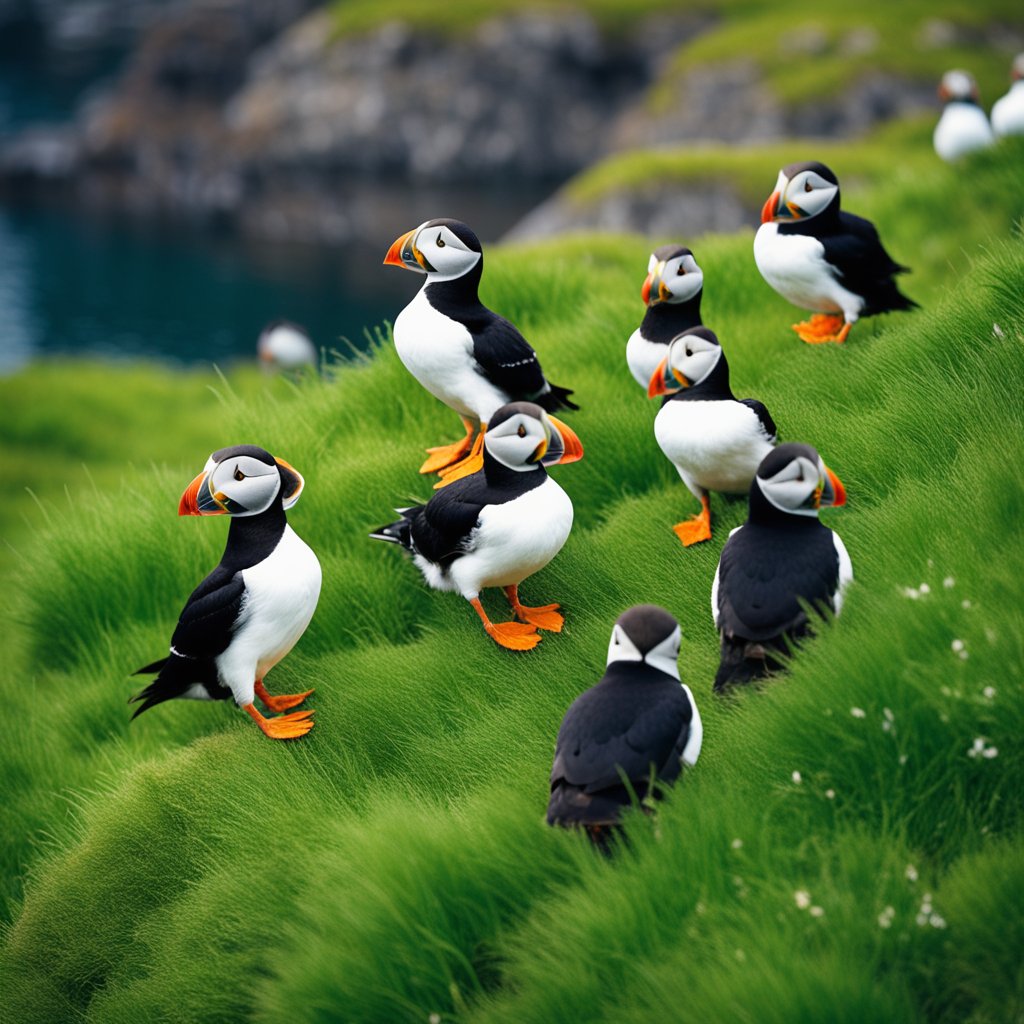
Have you ever seen a puffin in real life?
If not, add Lake Mývatn to your list!
Known for its vibrant beaked residents, this location is a treasure trove for bird enthusiasts.
Imagine yourself, camera in hand, eagerly awaiting the perfect shot of these exotic birds against the stunning Icelandic backdrop.
Why visit Lake Mývatn for puffins?
- Rich birdlife: The area boasts a significant puffin population.
- Photogenic: With colorful beaks, puffins are incredibly photogenic.
What makes Lake Mývatn special?
- Accessibility: It offers easy access to proximity with puffins.
- Scenic: The location itself is a natural wonder, encompassing beautiful lake views.
Here's your quick guide on puffin watching at Lake Mývatn:
- Timing is everything: Plan your visit in summer, when puffins nest around the lake.
- Respect their space: Maintain a safe distance for both your and the puffins' well-being.
- No touchy: Remember, no matter how cute, puffins are wild animals.
Did You Know?
- Nesting Numbers: Around 10,000 pairs choose this as their summer home.
- Picture Perfect: The contrasting landscapes make for dynamic photos.
Remember, Lake Mývatn isn't just about puffins; it's a haven for various wildlife.
So why not pack your gear, charge your camera, and set out on an adventure to capture some of the most charming birds Europe has to offer?
Your photo album will thank you!
Crayfish in North American Lakes
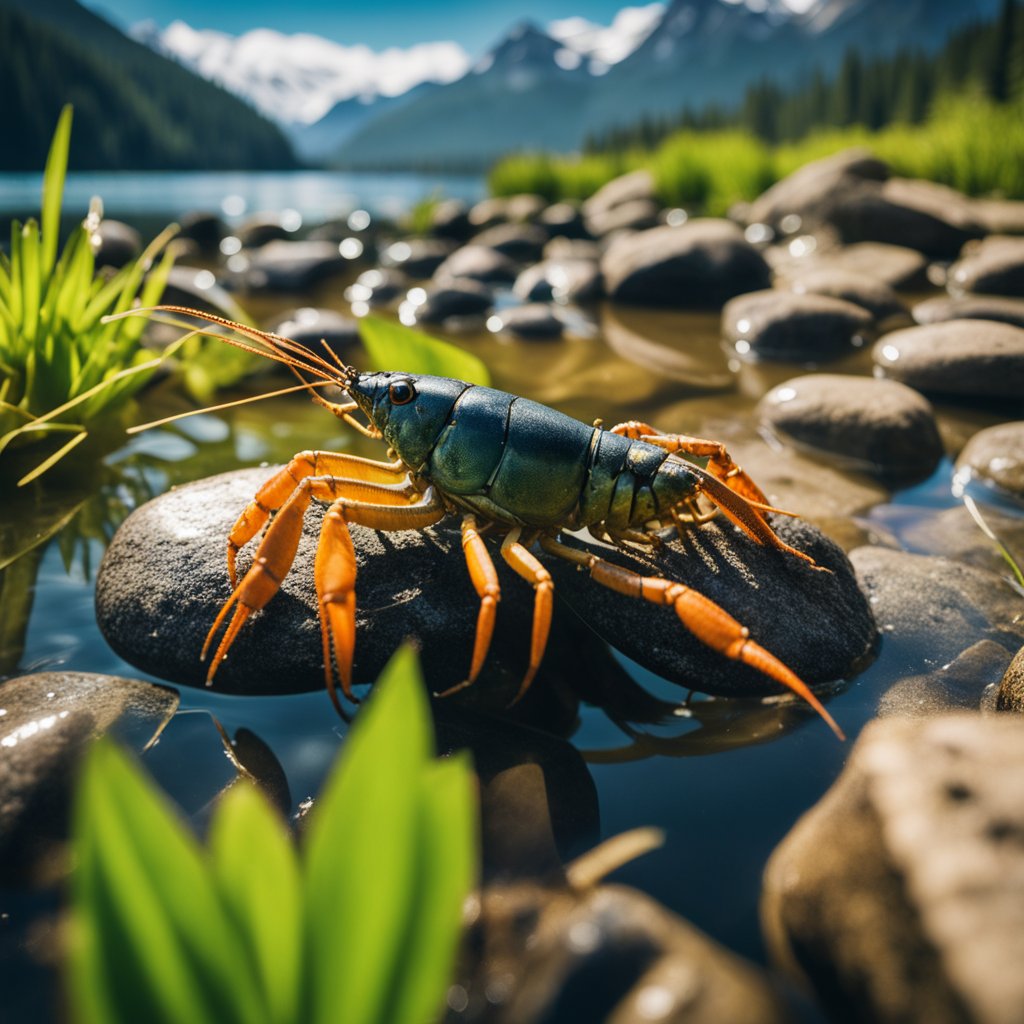
Have you ever spotted a tiny lobster-like critter while at a North American lake?
Chances are, you've crossed paths with a crayfish!
These fascinating creatures are found scurrying along lakebeds or hiding beneath rocks and water plants.
They're not just interesting to watch; they play a vital role in the aquatic ecosystem.
In Michigan alone, eight native crayfish species exist, all belonging to the Cambaridae family.
But don't let the number fool you - North America is home to over 300 native species!
Let’s dive into some fun facts about these lake inhabitants:
- Nickname Central: Crayfish go by many names – crawfish, crawdads, and mudbugs to name a few.
- Diverse Dwellers: More than just fish bait, crayfish are gourmet food in the southern states. Think about the Louisiana crawfish boil next time you see these little guys!
Did you know that the Faxonius virilis, also known as the virile crayfish, is particularly widespread throughout Central, Eastern, and some Northern lakes, making it a frequent local encounter?
Here's a snapshot of their habitat:
While you're admiring lake wildlife, crayfish may not stand out like a moose or a bear, but their presence indicates a healthy waterbody.
So next time you’re by a lake, peek into the shallow water.
Spotting a crayfish could be a sign you're in an environment bustling with life!
Keep your eyes peeled for these small but mighty members of the aquatic community.
Herons in Tropical Lakes, Asia
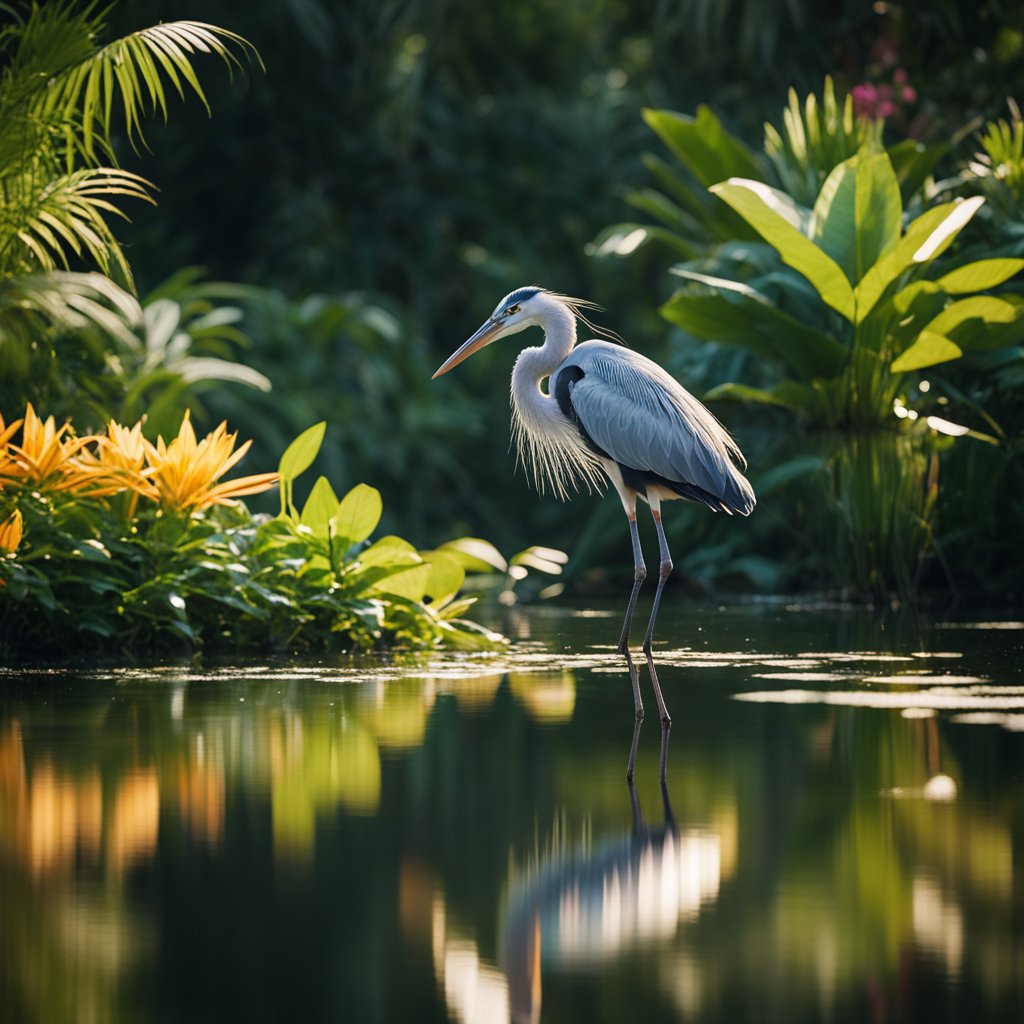
Ever spotted a heron while visiting a tropical lake in Asia?
These stilt-legged birds are quite the sight!
Let's talk about a few types you might see out there.
Gray Heron (Ardea cinerea)
- Location: Widespread across Asia
- Features: Ash-gray plumage, long legs, and a slender neck for expert fishing
- Habitat: Loves hanging around lakes and rivers
Here's a cool fact – did you know Gray Herons can stand as tall as 39 inches?
That's right, and with that size, they're like the ninjas of heron world, patiently stalking their prey in the wetlands.
Imagine this: You're strolling by a tropical lake, and you see a Gray Heron, poised like a statue by the water's edge.
Suddenly, it darts its head into the water, and snatch!
It comes up with a wriggling fish.
Quite the skilled hunter, wouldn't you say?
Now, while the Gray Heron enjoys wide habitats spreading across countries, each spot has its own story.
Take a moment and picture the serene lakes, with herons standing motionless, creating a picture-perfect moment against the backdrop of lush greenery.
Ready to go heron-spotting on your next trip?
Keep your camera ready, because these majestic birds in action are a must-capture.
And who knows, you might just stumble upon one of the many other heron species that call the tropical lakes of Asia their home.
Happy birdwatching!
African Clawless Otter in Lake Victoria, Africa
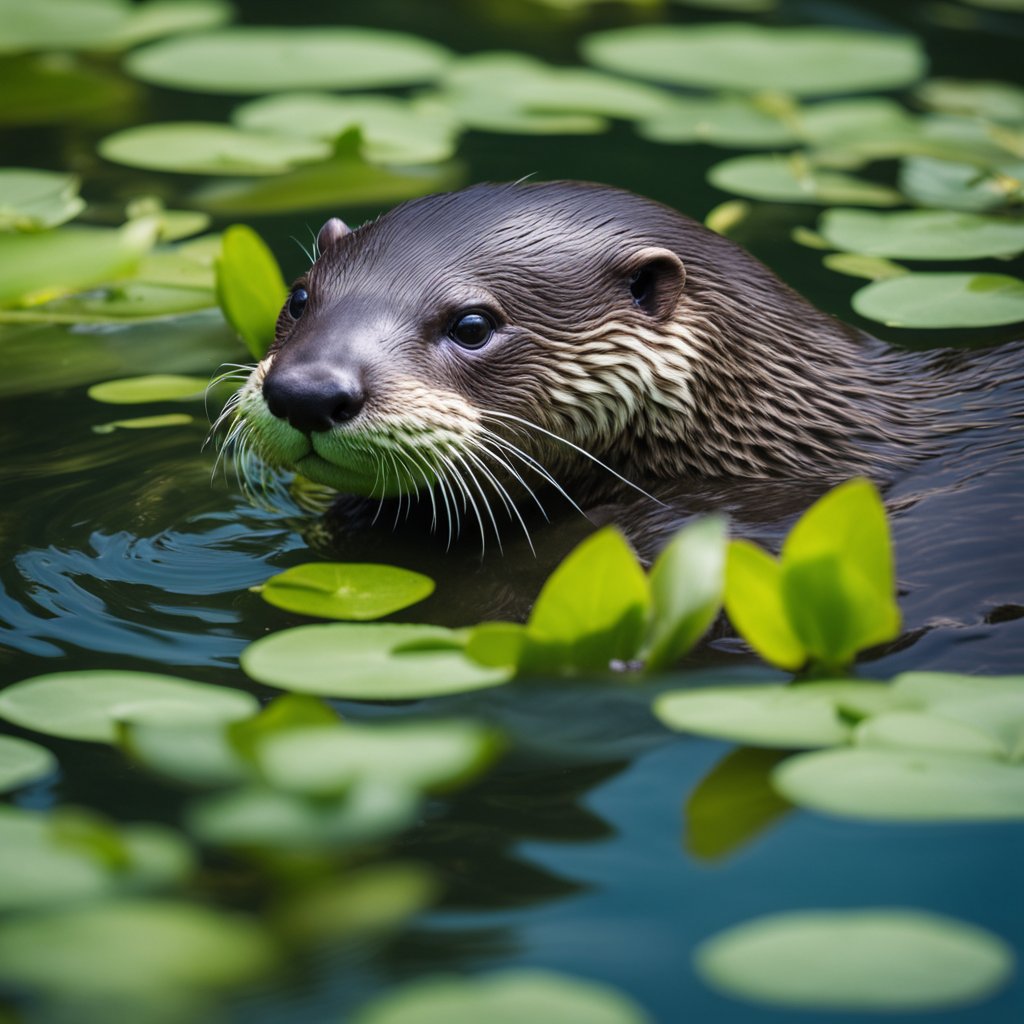
Have you ever spotted the delightful African Clawless Otter during your lakeside adventures?
Lake Victoria isn't just a massive body of water; it’s home to these fascinating creatures.
Without a doubt, they're quite the sight: imagine them gliding through the water or playfully snagging a meal.
Facts about the African Clawless Otter:
- Weight: Typically ranges between 10-16 kg.
- Length: They can measure from 73 to 95 cm.
Unlike their name suggests, these otters are not entirely clawless—they do have tiny claws on their back feet.
But yes, their front paws, perfect for foraging, are indeed clawless.
These features give you a clue about their hunting style, dexterous and rather unique.
Habitat in Lake Victoria: Lake Victoria’s bountiful ecosystem caters perfectly to these otters.
Unfortunately, their population has seen some decline due to shifts in the fish numbers, a crucial part of their diet.
Still, sightings of African Clawless Otters continue to delight visitors and locals alike, showcasing their essential role in the lake's intricate food web.
Now, picture yourself at the lake's edge, camera in hand.
Imagine catching a candid snapshot of these playful otters in action.
It's these moments that remind us why we must cherish and protect the splendor of Lake Victoria's wildlife.
Ready for the perfect photo-op on your next visit?
Keep an eye out for these charismatic swimmers—they're truly a must-see!
Greater Flamingos in South America's Andean Lakes
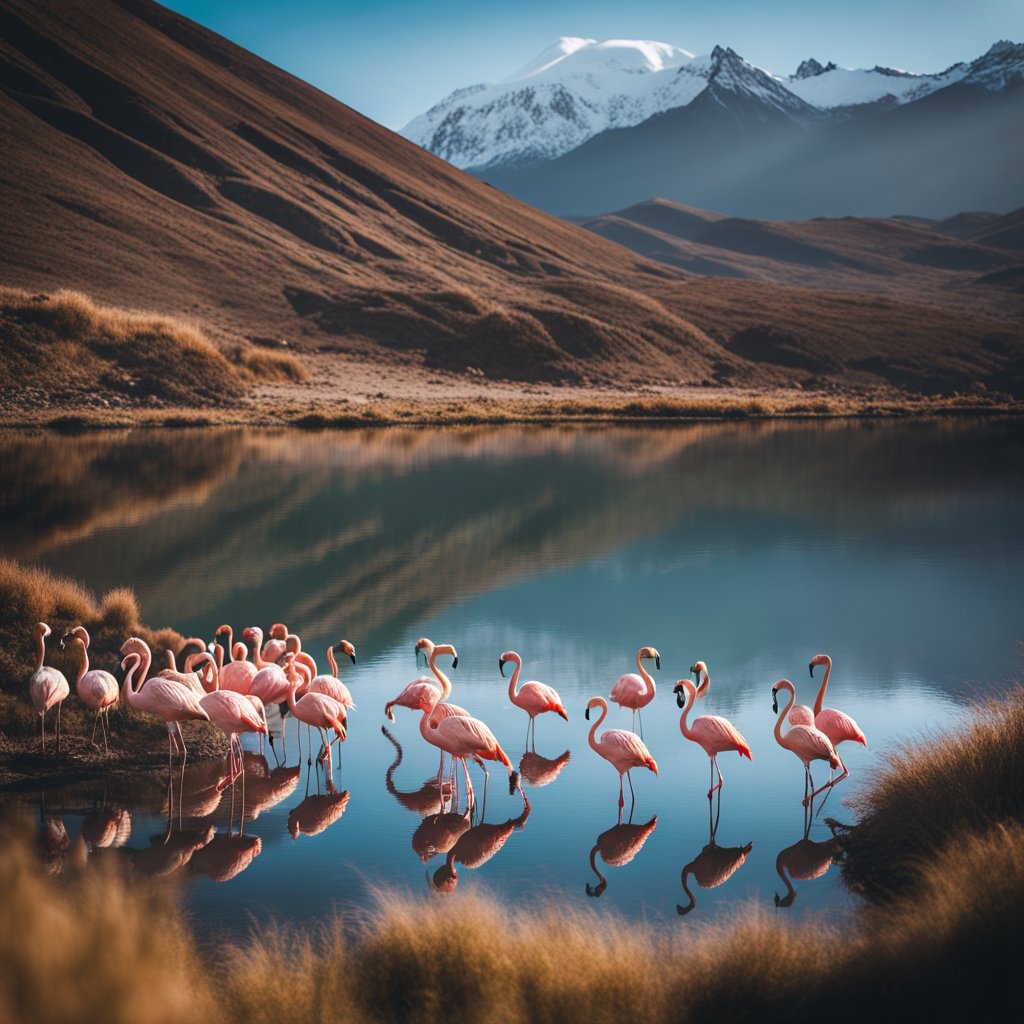
Have you ever pictured yourself at breathtaking altitudes, breathing in crisp mountain air while watching a parade of pink on water?
In South America's Andean lakes, you're in for such a treat!
Greater Flamingos grace these waters with their vibrant displays, thriving in places that might just take your breath away – quite literally, given the altitude!
Location Highlights:
- Andean Altiplano: Rugged, high terrain
- Salt Flats & Lagoons: Pink-hued lakes for breeding (Nov-Mar)
Here's a snapshot:
Imagine standing at the edge of a salt lake, camera in hand, as you capture the surreal presence of flamingos against a red-tinted backdrop.
With fewer than 40,000 Andean Flamingos in existence, spotting these rare birds is both a privilege and a must-see experience.
Curious about where to aim your binoculars?
- Bolivia: Flamboyant gatherings on the salt flats
- Chile: James's Flamingos, initially discovered here
Feeding, walking, or just basking in the South American sun, these flamingos present a spectacle like no other.
Don't just settle for the usual sights; aim for the extraordinary, where flamingos touch the sky with their wings.
And who knows, flick through your photos later, and you might just feel the altitude all over again!
Ducks in Central Park, North America
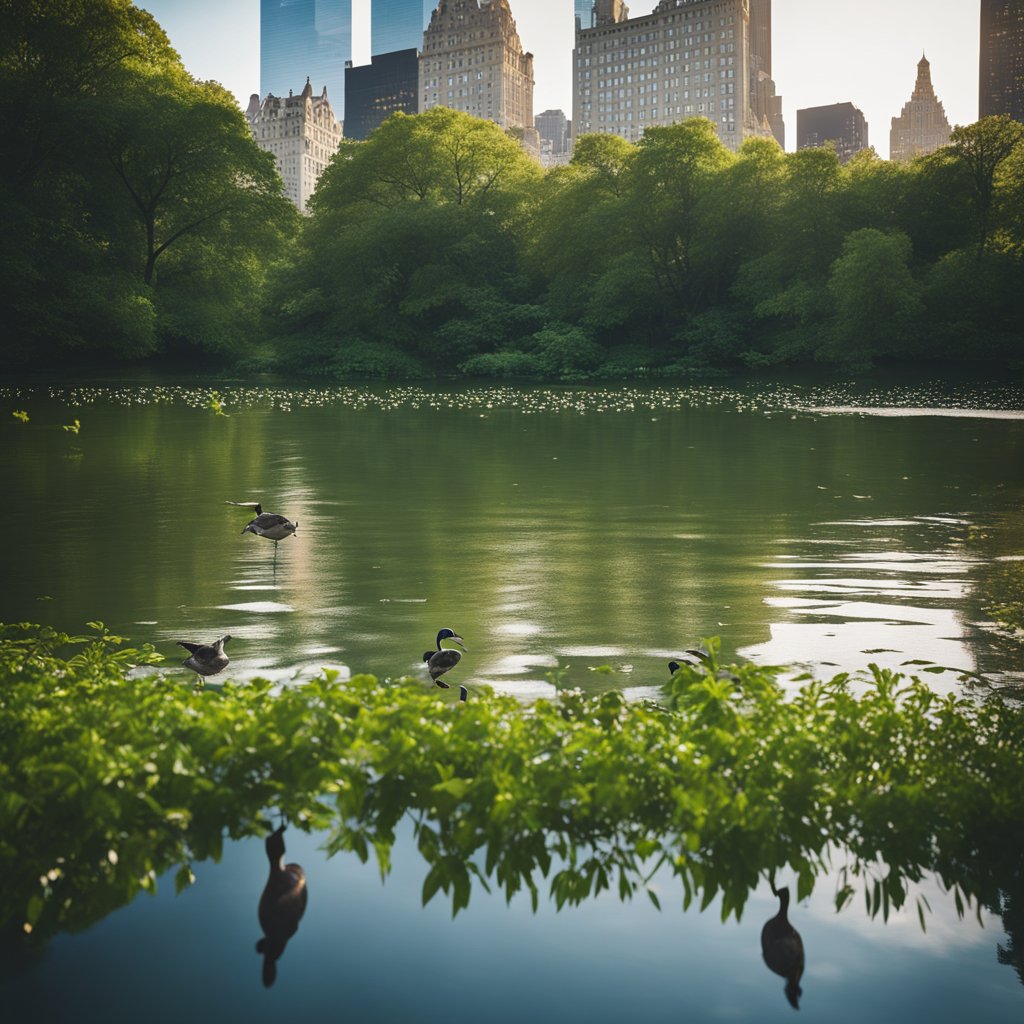
Ever strolled through Central Park and spotted a flash of color on the water?
That's probably one of the amazing ducks that call this urban oasis home!
Winter through early spring is the prime time for duck watching.
Grab your binoculars because here's where you can find them:
- The Reservoir: Stretching between 86th and 96th streets, it's the place to see a variety of ducks gliding gracefully.
- The Pond: Especially famous for a show-stopping visitor, the Mandarin Duck. His stunning plumage rivaled the city's lights!
Did you know, in late 2018, a male Mandarin Duck, affectionately dubbed as the "Hot Duck," captivated New Yorkers and visitors alike?
Not native to North America, this striking bird, typically found in East Asia, became a sensation, turning the Pond into a paparazzi hotspot!
Here's a quick peek at what you might see:
- Mandarin Duck
- Wood Duck
- Mallards
Remember to keep our feathered friends safe:
- Don't feed them. They've got plenty of natural food.
- Take your trash with you. It keeps their home clean and injury-free.
So next time you're in Central Park, take a moment by the water's edge.
Who knows?
Maybe the celebrity ducks will grace you with a photo op!
Keep your camera ready and eyes peeled – these ducks are the real quacking deal.
Freshwater Snails in European Lakes
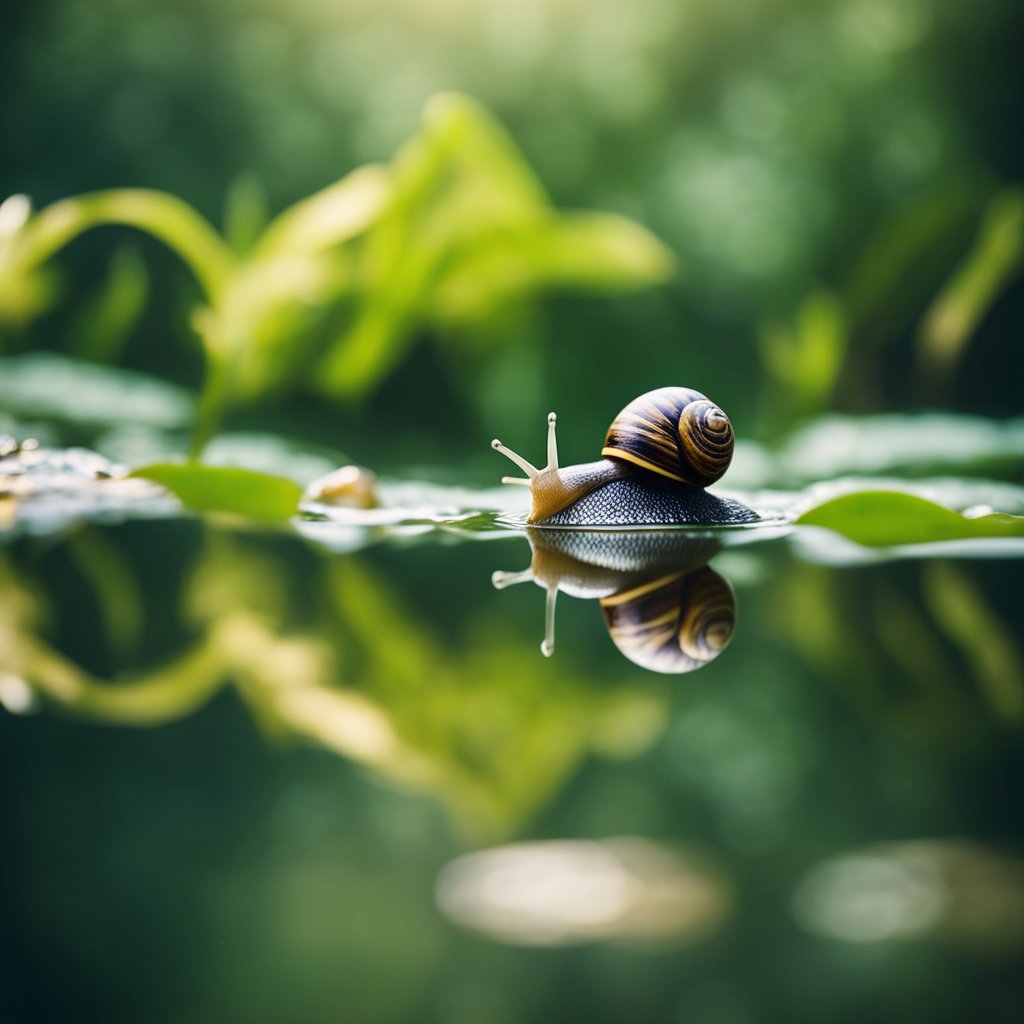
Have you ever peered into the clear waters of a European lake and noticed the tiny creatures skimming along the submerged rocks and plant stems?
You're looking at freshwater snails, friends of the ecosystem that punch well above their weight.
Types of Freshwater Snails in Europe:
- Great Ramshorn Snail (Planorbis planorbis): You'll spot these in Lake Baikal, Siberia. Their shells spiral outward, creating a disc-like shape that's quite distinct.
- Bladder Snail (Physella acuta): Common in both lakes and ponds, with a pointed shell that houses the snail's soft body.
What's Their Deal?
- They’re tiny guardians of water quality, munching on unwanted algae.
- They're a staple in the diet of many lake-dwelling animals.
Habitats:
- Found from ephemeral pools to large lakes.
- Thrive in moderate temperatures with good water quality.
Curious about what these little lake dwellers contribute to their watery world?
They're diligent cleaners who work around the clock.
By feeding on algae and decaying organic matter, they help to maintain a healthy and balanced ecosystem for other lake inhabitants.
Here's the fun part — these snails aren't just nature's janitors.
They bring a sense of calm to those who watch them.
It's a snail-paced life, certainly, but one full of purpose.
So, next time you're out exploring the natural beauty of European lakes, take a moment to search for these incredible mollusks.
Their slow grace is a reminder of the often unseen work that keeps our waters pristine.
Keep an eye out – they're small but mighty important!
Birds of Prey in Lake District, Europe

Have you ever marveled at the grace of a falcon in flight or locked eyes with a wise old owl?
The Lake District in Europe is not just about serene lakes and mountains, it's also a fantastic spot to encounter an array of birds of prey in their natural habitat.
Bassenthwaite Lake is notorious for being a haven for the ospreys, a fish-eating bird of prey that has been the center of conservation efforts.
Did you know?
At the Lakeland Bird of Prey Centre, nestled in the Lowther Castle grounds, you can find an impressive collection of over 150 birds including:
- Falcons
- Buzzards
- Kites
- Owls
- Eagles
And not just from the UK!
These birds hail from different corners of the world.
The Lake District Wildlife Park offers you a chance to get up close and personal with these magnificent creatures.
Here's what you can expect:
- Meet and Greet: Engage in a one-on-one with different species from a towering bald eagle to a stealthy hawk.
- Flying Displays: Witness the incredible agility of these birds in action.
- Educational Talks: Learn fascinating facts about their behaviors, diets, and conservation status.
The park creates an experience that's not just about viewing; it's a full interactive learning adventure.
Imagine a hawk swooping down from the tree to your gloved hand—exhilarating, right?
So, when you're mapping out your Lake District getaway, slot in time for these feathered friends.
It's a chance to admire the birds soaring against the backdrop of the stunning Lake District scenery.
Perfect for wildlife enthusiasts, photographers, or if you're simply after a unique experience that connects you with nature.
Don't miss out!


